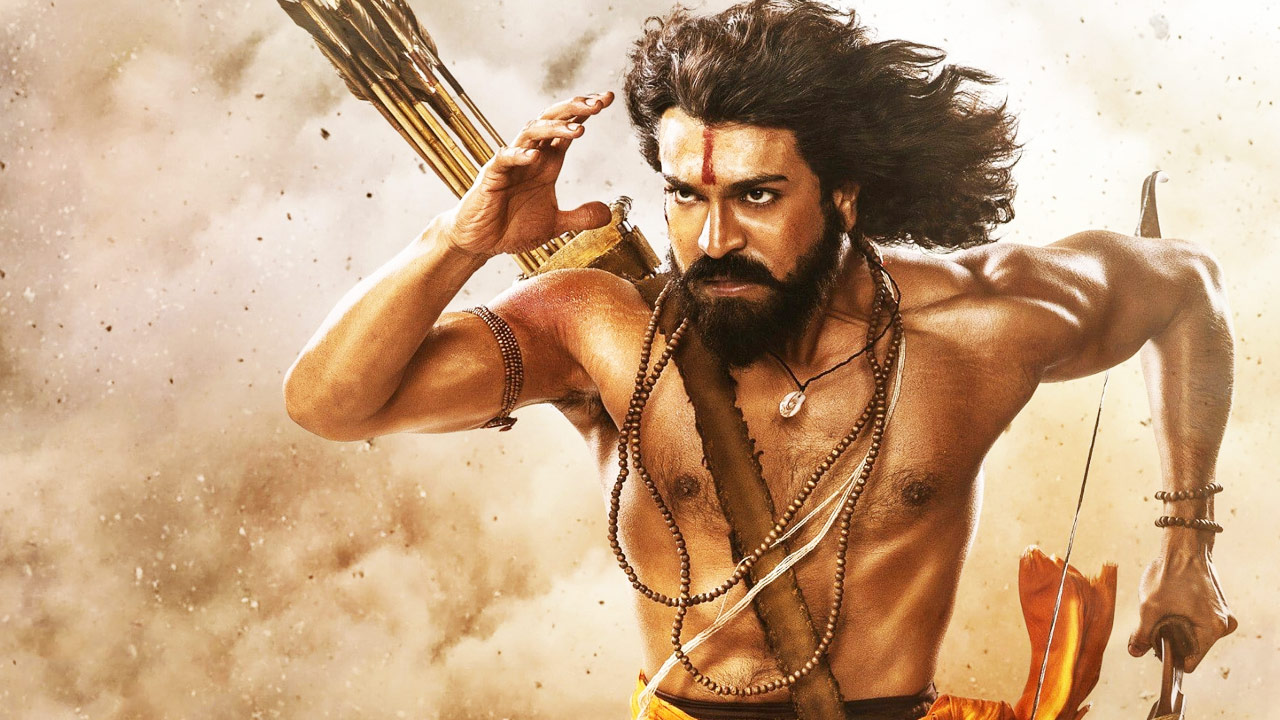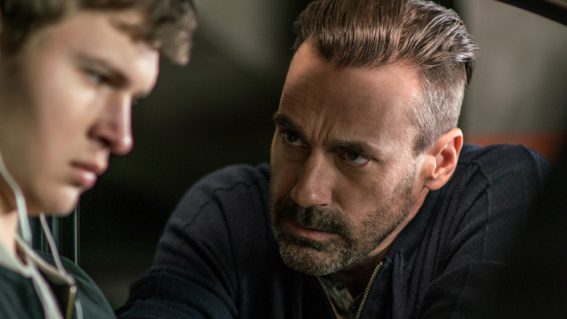RRR is taking Australian cinemas by storm – but you’ve probably never even heard of it

The epic action movie RRR has made a big splash at the Australian box office—so why is nobody talking about it? Travis Johnson investigates one of this year’s standout action movies.
This week I checked out one of the best action movies I’ve seen in years. I’d have to go back to the first John Wick or even The Raid to recall an actioner that had me sit up and take notice like this. The stunts are next level, the action superbly choreographed, the emotional tenor set at a fever pitch, the cinematography and editing simply electrifying. So it’s weird to me that nobody in the mainstream Australian critical community is talking about RRR.
Directed by S. S. Rajamouli, RRR is a Telugu-language historical fantasy that almost defies description. For those unfamiliar with Desi cinema, or “Tollywood”, the best I can out it is this: imagine if Baz Luhrmann directed Braveheart. All the pageantry and hearts-on-sleeve emotions of Moulin Rouge! crossed with the anti-colonial fervour and brutal action of Mel Gibson’s historical epic. RRR (which stands for “Rise, Roar, Revolt”) is also similar to Netflix’s recent Black western The Harder They Fall, in the way it takes historical personages and reimagines them as larger-than-life, near-superhuman figures.
The story follows two real-life Indian revolutionaries: Gond tribal leader Komaram Bheem (N. T. Rama Rao Jr.) and militant resistance fighter Alluri Sitarama “Ram” Raju (Ram Charan). Taking a less well-detailed period of their lives circa 1920, RRR presents a “what if?” scenario that sees Bheem travelling to Delhi to try and rescue a girl enslaved by the evil British Governor (Ray Stevenson) and his wife (Alison Doody). Meanwhile, policeman Ram hunts down revolutionaries in the hope of being promoted to a position where he can steal guns from the British for the Indian resistance. There’s a bit of The Departed/Infernal Affairs business, with Bheem and Ram forging a solid bromance, each unaware of who the other is, before teaming up and laying waste to the entire British Raj over the course of three hours.
The first 20 minutes contain more action—and better action—than anything that’s been on the big screen in recent years apart from, perhaps, Michael Bay’s Ambulance. Before the title even appears on screen we’re treated to a rescue involving a motorcycle, a horse, and an exploding train that could climax most movies; here it’s just a taste of what’s to come. By the time we get to the actual climax, there’s action and spectacle of a scale and craftsmanship rarely seen in mainstream cinema these days, delivered with a kind of open-hearted emotional sincerity that makes peak-era John Woo look like Merchant Ivory.
Why is this genuinely great film receiving so little media coverage in Australia? Not that RRR is having difficulty finding an audience, having so far (at the time of publishing) grossed around $3.4 million at the local box office. However, awareness of the film seems to be limited to the Desi community and dyed-in-the-wool film freaks like me.
There is frequently a disconnect between mainstream, anglo-centric film culture and journalism in Australia, and what’s actually getting released. Asian cinema in particular tends to be underrepresented in terms of reviews and local coverage: for instance last year’s The Battle at Lake Changjin, a massive hit for China that grossed almost $900m globally, but passed largely without comment here. Other foreign titles that have landed in the top 10 at the Australian box office in the last couple of months include The Kashmir Files, Gangubai Kathiawadi and Jujutsu Kaisen O: The Movie.
Critic and former cinema manager Grant Watson told me that distributors have learned not to waste their efforts on attracting mainstream media attention: “There’s no point in a distributor promoting a Desi film beyond the Desi community,” he says, “because they will get little to traction in the broader market…anyone likely to see the film will likely already be aware of the film and will go see it.”

This presents a bit of a chicken-and-egg conundrum. Distributors don’t court mainstream media because they don’t put enough bums on seats, which means incredible films sail by wider audiences because they don’t know about them, which makes publishers gun shy about covering such films because there’s minimal audience awareness, which means distributors don’t court…and on and on we go.
In the end it’s audiences that miss out. Watching RRR was a revelation, and sadly one of the things it revealed was how anaemic mainstream American action cinema has become lately. Taking our two biggest genre blockbusters of recent months, there is absolutely nothing in either Spider-Man: No Way Home or The Batman that comes within a parsec of RRR. There’s no contest. On streaming, meanwhile, the success of shows such as Squid Game has proven that foreign language productions can be massive global successes, generating a tonne of views and lots of watercooler chatter.
In an increasingly fractured and content-drenched market, it’s the role of critics such as myself to go out and find the cool stuff—though in the case of RRR, a hell of a lot of people pipped me to the post. See it. You won’t regret it. This movie is more ballsy, brazen, inventive, and over the top than anything else you’re likely to see this year. Trust me: you’ll have a blast.
















